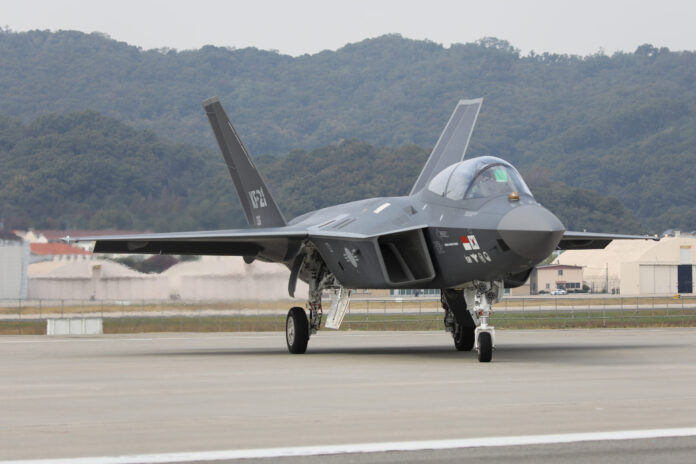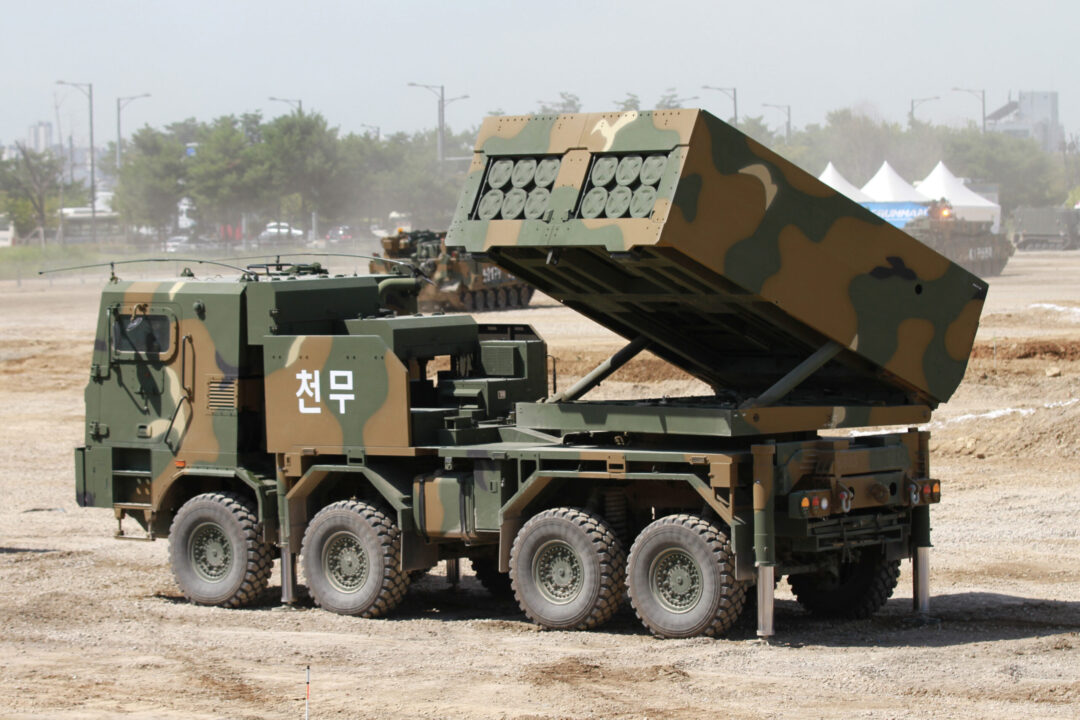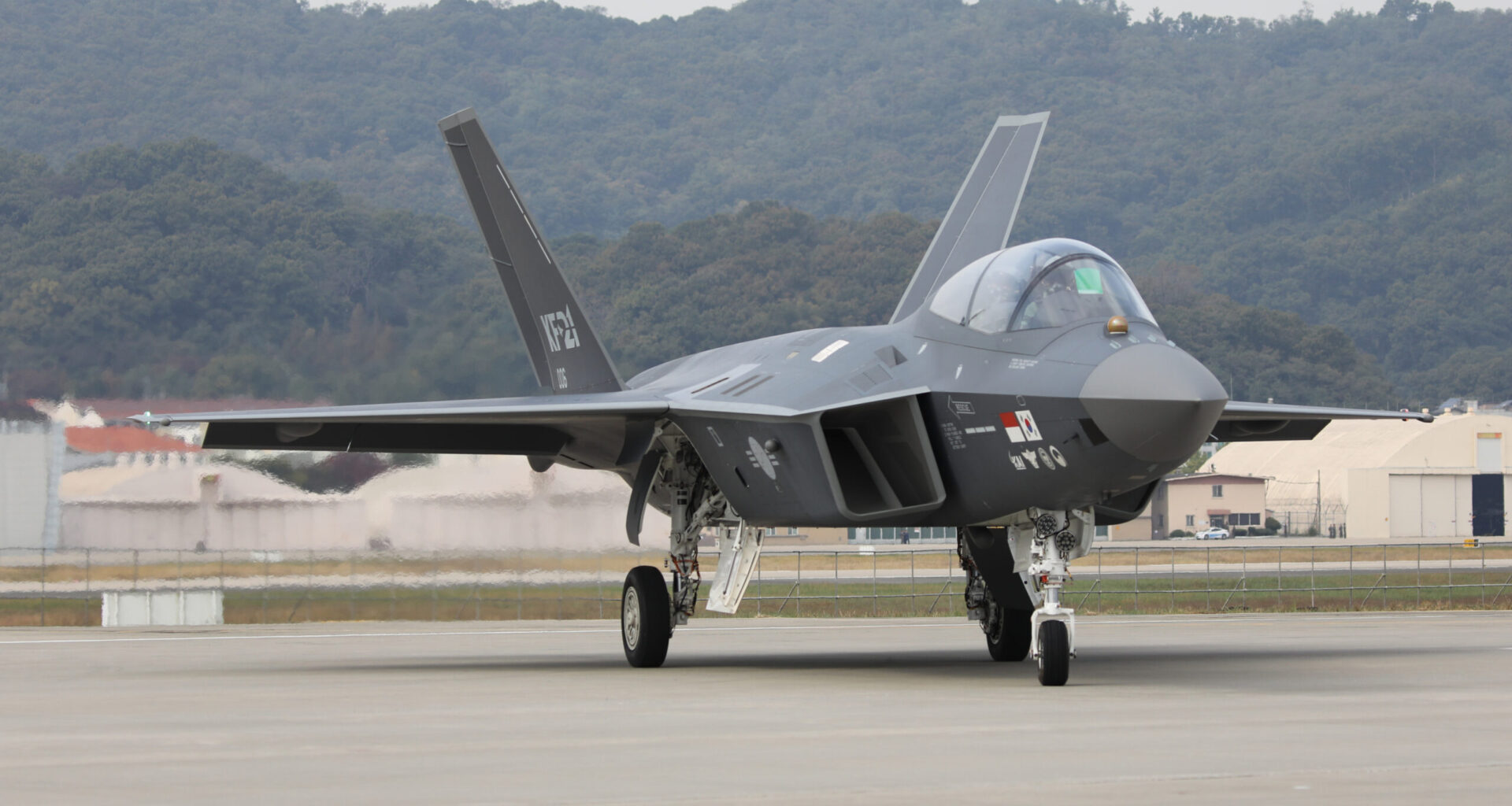
 South Korea is producing the first series-produced KF-21 Boramae fighters, and KAI is hopeful of exports. (Gordon Arthur)
South Korea is producing the first series-produced KF-21 Boramae fighters, and KAI is hopeful of exports. (Gordon Arthur)South Korea’s defence industry is an Asian success story, with recent data from the Stockholm International Peace Research Institute (SIPRI) showing that the nation was the world’s tenth largest arms exporter from 2020-24. This position has been further cemented by the latest round of company earnings that cover the first half of 2025.
SIPRI stated that South Korea accounted for 2.2% of the global arms trade in 2020-24, and Europe, South America, Asia and the Middle East are driving continued demand for South Korean arms.
Indeed, the country’s five largest defence companies have just reported operating profits that are up 161.2%, reaching KRW2.3 trillion (approximately US$1.66 billion), from January to June this year.
The five companies included in this cumulative sum are Hanwha Aerospace, LIG Nex1, Korea Aerospace Industries (KAI), Hyundai Rotem and Hanwha Systems. Furthermore, their combined sales for the six-month period have almost doubled compared to a year ago, moving from KRW9.9 trillion to KRW19.2 trillion.
The biggest earner among the top five firms was Hanwha Aerospace, which had a record operating profit of KRW1.43 trillion in the first half of 2025. This was four times what it was a year ago. One of its most recent deals comprised 20 K9A1 155mm self-propelled howitzers to Vietnam.
As for LIG Nex1, its profit was up 64.6% to KRW191.2 billion. KAI’s gains were more modest. They were up just 7.9% to give an operating profit of KRW132 billion, and this was despite a slight drop in sales. Among KAI’s most recent contracts are FA-50 light fighters sold to Malaysia and Poland.

 Hanwha Aerospace’s K239 Chunmoo rocket launcher has attracted overseas sales, offering an alternative to the US-supplied HIMARS. (Gordon Arthur)
Hanwha Aerospace’s K239 Chunmoo rocket launcher has attracted overseas sales, offering an alternative to the US-supplied HIMARS. (Gordon Arthur)
Moving on, Hyundai Rotem had an operating profit of KRW460.4 billion, representing a nearly 200% increase compared to the same period last year. The only one of the five to report a drop in operating profit was Hanwha Systems, which declined 29.5% to KRW91.6 billion. It is currently delivering multifunction radars to the UAE and Saudi Arabia for their M-SAM air defence systems.
The future continues to look rosy for these companies too, with the five possessing a combined order backlog of KRW111.9 trillion won (US$80.7 billion).
Incidentally, despite increasing self-sufficiency in weapons such as armoured vehicles, small arms, UAVs, fighters, missiles, naval vessels and radars, South Korea still imports significant amounts of military equipment from overseas.
In the 2020-24 period, SIPRI calculated that South Korea consumed 2.6% of global arms imports, ranking twelfth internationally. Notably, some 86% of these imports came from its ally the USA. Nonetheless, Seoul’s 2020-24 arms imports experienced a 24% drop compared to 2015-19, showing that the East Asian country is increasingly becoming more self-sufficient.
